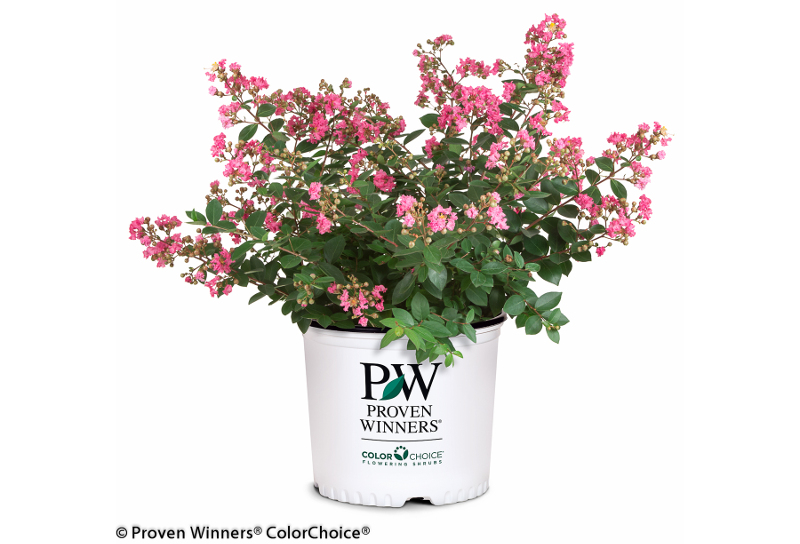The showy blooms of Crape Myrtle are a common sight in southern yards and landscapes, and for a good reason. Once established, this plant can easily take on the heat and humidity of summer. This adaptable plant, which also goes by Lagerstroemia, is a deciduous perennial that features woody stems and delivers beautiful blooms in pink, purple, or white hues throughout the summer.
Crape Myrtle can grow rather tall, with some varieties reaching up to 25 feet in height, making this plant an excellent natural barrier or privacy screen. Dwarf varieties may get up to 3 or 4 feet and are better suited to smaller spaces or containers. Follow these tips for healthy plants and enjoy the gorgeous blooms of the Crape Myrtle.

What You Need To Plant Crape Myrtle
- Shovel
- Compost or manure
- Garden spade
- The perfect location or container
- Water source
Where to Plant Crape Myrtle
Sunlight and well-draining soil are perhaps the most essential requirements when planting Crape Myrtle. This plant needs lots of bright sunlight to thrive. The soil must be well-draining because Crape Myrtle cannot handle soggy conditions. Let the soil dry out before watering to keep the roots happy and healthy.
Crape Myrtle can comfortably live in poor soil, but the right soil will support consistent growth and abundant blooms. Use rich, slightly acidic soil with a pH of 5.0 - 6.5. Position the top of the root ball a couple of inches higher than the surface of the ground when planting. Placing the root ball high will account for settling and ensure the plant does not sit lower than the ground surface.
Crape Myrtle Spacing
Crape Myrtle can grow very large or maintain a compact size depending on the type. Large Crape Myrtle plants can separate an area or create a private backyard space and spread up to 8 feet. Smaller plants provide a burst of color and may spread out about 2 feet. Depending on the variety, space Crape Myrtle plants so the branches of neighboring shrubs will just barely reach. For example, plants with an 8-foot spread can be planted 8 feet apart, so they will create a wall of foliage and flowers when they reach maturity and fill in.
Crape Myrtle should be planted at least half of the distance of its spread from a building or other plants. A plant with a 4-foot spread should be planted at least 2 to 3 feet from a building, so the plant will have room to grow without encroaching on the structure.
Steps To Plant Crape Myrtle
Step 1 - Select a sunny spot that has enough space to support a mature plant.
Step 2 - Dig a hole about 2 to 3 times as wide as the root ball and slightly deeper.
Step 3 - Mix manure or organic compost into the soil.
Step 4 - Place the root ball in the hole, so the top of the root ball is a couple of inches higher than the ground level.
Step 5 - Backfill the hole and firmly press the ground into place.
Step 6 - Drench the soil around the plant to saturate the roots.

When to Plant Crape Myrtle
Crape Myrtle should be planted in the spring when the weather is consistently warm, and there is no longer a chance of frost. Mornings are generally a good time to plant, but as long as you give the Crape Myrtle a nice long drink once it's in the ground, the plant will be fine.
Transplanting Crape Myrtle
Crape Myrtle is hardy in USDA zones 7 through 9. Late winter is a good time if the plant needs to be moved or transplanted. Wait until the plant is dormant, so any time after the leaves fall from this deciduous shrub but before new leaf growth starts to appear in the spring.
Include a generous amount of soil around the root ball to avoid damaging the roots when digging up. Dig a hole 2 to 3 times larger than the root ball, amend the soil or manure or organic compost, and plant the shrub, so the root ball is a couple of inches higher than the ground. This additional height accounts for settling, which may occur.
 |
Author Alison Cotsonas - Published 24-01-2022 |
